Sages are highly valued for their long flowering periods. They beautifully adorn gardens or terraces from spring through autumn. Depending on the variety, sages can be annual, biennial or perennial. They bear flowers in spikes, either white or vibrantly coloured, ranging from deep blue to soft pink, through mauve, red, salmon orange or even bicoloured. Easy to grow, sage is also simple to sow directly in the ground or in pots. Discover through our tutorial when and how to sow sage in pots or directly in the ground.
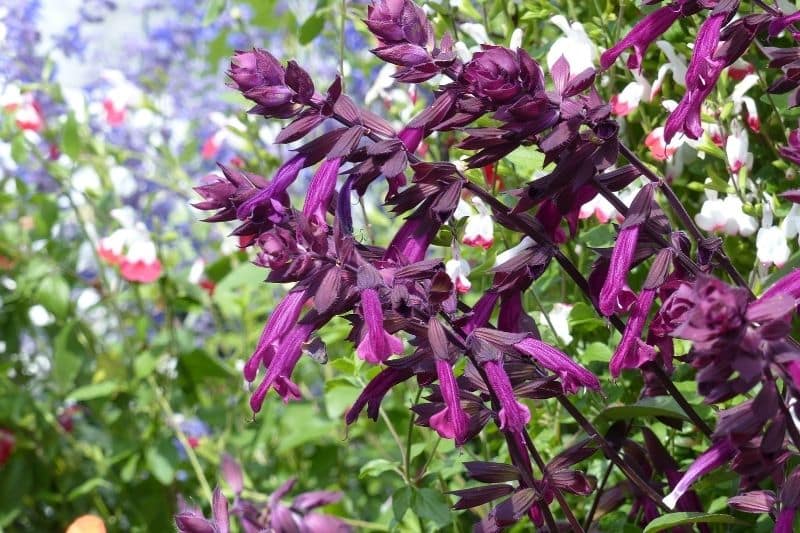
Salvia 'Love and Wishes' is a rather tender sage, grown as an annual
When to Sow Sage?
Appreciating warmth, sage is a plant whose seeds require temperatures above 18°C to germinate. Sages, particularly annual varieties, should therefore be sown under cover from March onwards to ensure a long summer flowering period. For this, carry out sowings in a greenhouse, conservatory or indoors. The young plants can then be transplanted outdoors between April and June depending on the region.
Seeds can also be sown directly in the ground in spring, from April to May depending on your climate. This type of sowing is mainly practised in warm regions. Elsewhere, sowing in pots and in warmth is preferred. Always wait until the risk of frost has passed before sowing.
How to Sow Sage in Pots?
Required Tools:
- A spray bottle;
- Seed and potting compost or a mix of 2/3 standard compost with 1/3 planting sand;
- Buckets or pots or a mini greenhouse;
- Sage seeds.
Steps for Sowing Sage in Buckets:
1) Fill your buckets with seed compost or a mix of 2/3 standard compost (or even turf) with 1/3 planting sand. The substrate should come to within 2 cm of the rim. Then firm it down with your hands.
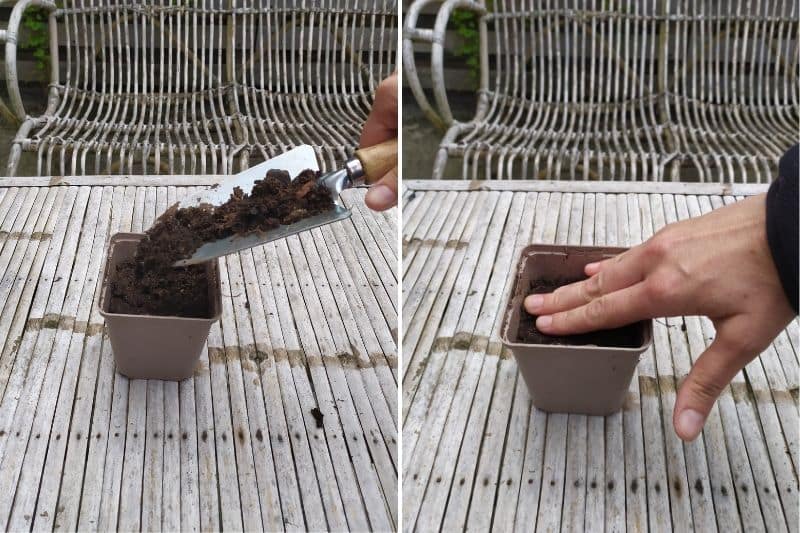
Fill your buckets with compost and firm down
2) Using the spray bottle, moisten the compost, preferably with rainwater.
3) Distribute 3 to 4 seeds on the surface.
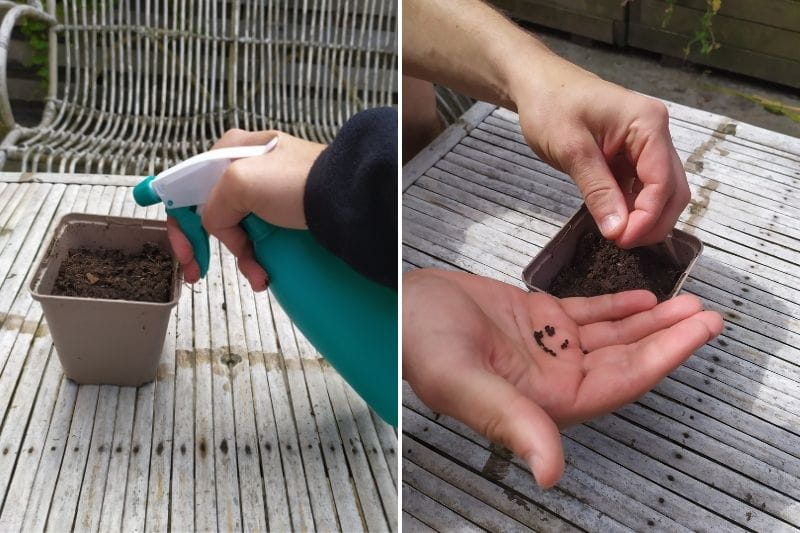
Moisten the compost and distribute a few sage seeds
4) Cover the seeds with a thin layer of compost, between 0.5 cm and 1 cm, then gently firm down.
5) Water again, but without excess.
6) Place the buckets in a greenhouse, conservatory or a room in your home. Sage seeds require temperatures of at least 18°C to germinate. Germination may take between 20 and 25 days. Meanwhile, the compost should always remain slightly moist, but not waterlogged.
7) Once the young seedlings appear, place the pots in direct light, in a greenhouse or behind a south-facing window. Be careful, the compost dries out faster in full sun! Pay attention to watering. Not too much, not too little.
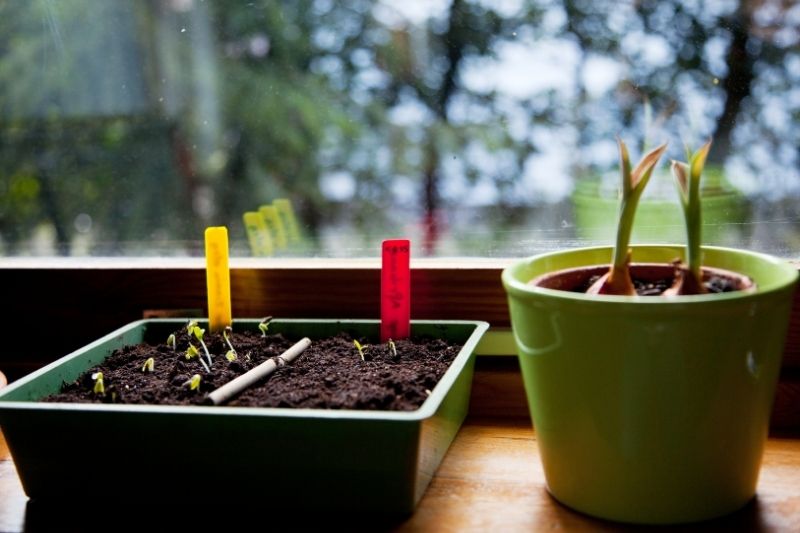
place the young shoots in the light
8) When the plants reach 2 to 3 centimetres, thin out the plantings. This involves keeping only one plant per bucket, removing the other shoots.
Tip: Take your plants outside during the day when temperatures are above 12°C. This will help strengthen them so they better withstand weather conditions once planted out. Bring the plants back in late afternoon to spend the night in warmth.
9) After a few weeks, transplant the young sages into the garden or a larger pot, once the risk of frost has passed, usually after 15 May. Also wait until your plants are large enough and well-rooted to be handled.
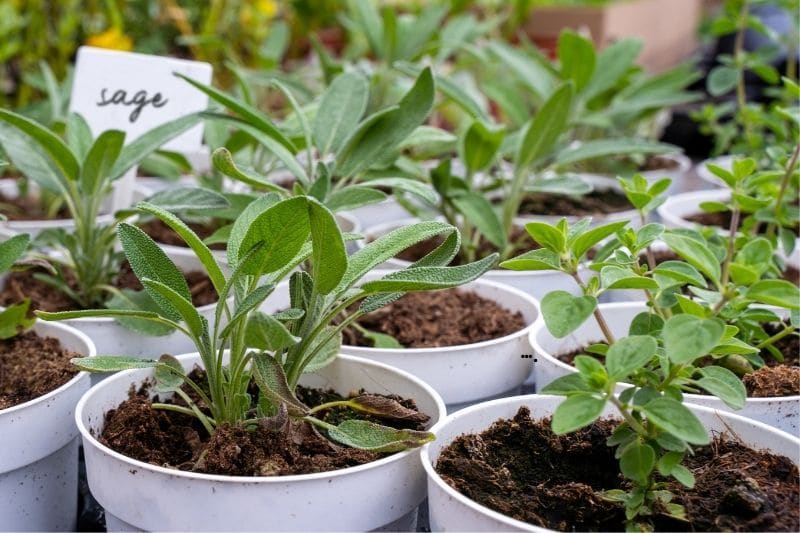
From left to right: common sage and shrubby sage in pots
How to Sow Sage Directly in the Ground?
Required Tools
- A spray bottle or watering can with a fine rose;
- A rake;
- Tools to prepare and aerate the soil: spade, organic fork, hoe, etc;
- Sage seeds;
- Optional but recommended: well-rotted compost or compost;
Steps for Sowing Sage Directly in the Ground
1) Choose a sunny and warm spot. Indeed, sage needs warmth to germinate well.
2) Prepare the soil by loosening it with an organic fork or spade.
3) Rake the soil with your rake to make it fine.
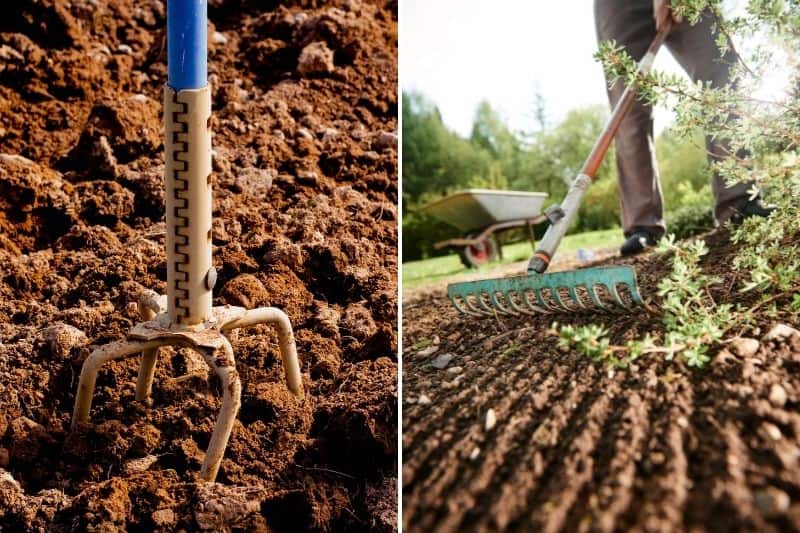
Preparing the soil is a crucial step for sowing sage seeds
4) You can add well-rotted compost to enrich the soil or a little compost. If your soil is heavy or clayey, also add coarse planting sand to improve water drainage.
5) Water your soil, preferably with rainwater.
6) Place the seeds in small clusters on the soil, meaning small groups of 4 to 5 seeds. Space these seed groups 40 cm apart.
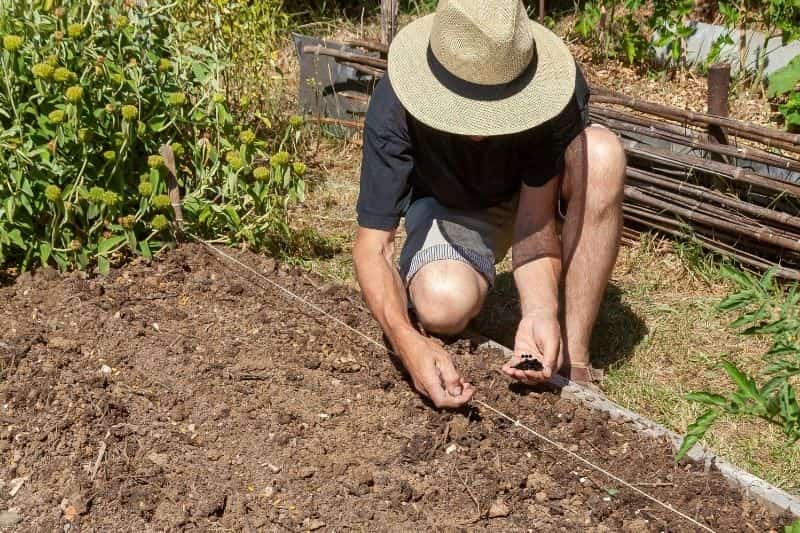
Sow your seeds in small clusters
7) Cover the seeds with a thin layer of compost or soil. This substrate layer should be between 0.5 and 1 cm thick maximum.
8) Water again, but more lightly to avoid dispersing the seeds. You can use a spray bottle for more delicacy.
9) Keep your soil always moist, but not waterlogged, until germination. Young shoots will appear after 20 to 25 days if temperatures are favourable (above 18°C during the day).
10) When your seedlings reach a few centimetres, thin out each group. This means keeping only one young shoot per group, removing the others.
To Go Further:
- Discover our varieties of sage seeds, as well as our potted sages.
- Find out all you need to know about sages: planting, pruning and care.
- Need help choosing? Discover our advice sheet on "Sages: Which Varieties to Choose?"


































![[plant_label]Sow[/plant_label] [plant_name]sage[/plant_name] sowing salvia: tips and technique](https://en.promessedefleurs.eu/blogwp/wp-content/uploads/2022/07/Semer-une-sauge-3.jpg)
Comments